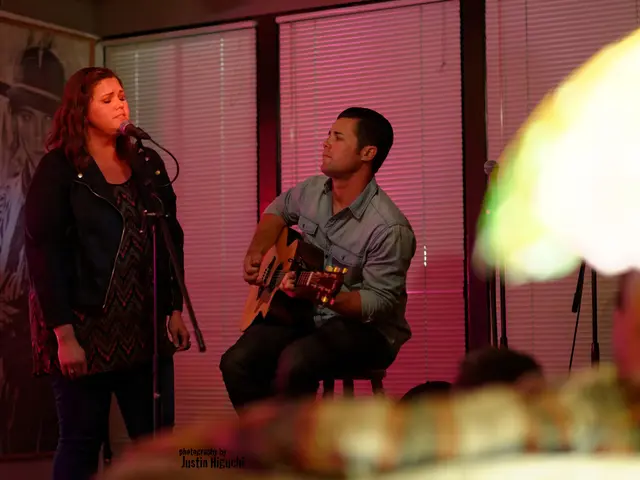Brief Overview of Minimalism's Evolution and Its Current Popularity
From ancient philosophies to modern-day lifestyles, minimalism has evolved as a response to the increasing complexity of the world. This practice, rooted in simplicity and intentionality, encourages the removal of excess to focus on core essentials.
The concept of minimalism can be traced back to classical and ancient traditions that valued clarity, order, and purity. During the Renaissance, Western art embraced humanism, focusing on humanity and civic life through clearer and more direct expression. This bridge between classical antiquity and modern eras paved the way for various art movements, many of which reacted against their predecessors' complexity or excess.
In the 20th century, Minimalism emerged explicitly as a reaction against the emotional complexity and subjective intensity of Abstract Expressionism. Minimalist art, spearheaded by figures like Donald Judd and Agnes Martin, focused on simple forms, clean lines, and limited color palettes to express purity and clarity, stripping away non-essential, ornamental elements.
Architecturally, this philosophy echoes principles found long before in traditional Japanese aesthetics, which valued simplicity, nature, and spiritual clarity. The famous dictum “less is more,” coined by Ludwig Mies van der Rohe, captures Minimalism’s emphasis on moral and intellectual discipline, where form and materials are expressed honestly without decoration or excess.
Minimalism found its way into everyday life as a response to consumerist standards, promoting the need for less and finding relief and contentment in needing and wanting less. Today, it manifests as a lifestyle advocating intentional living, reducing clutter, and focusing on meaningful essentials.
Historically, minimalism has been a part of various religious groups, including Buddhism and Christianity, which often emphasize shedding possessions for spiritual enlightenment or caution against attachment to material possessions. Buddhism teaches that attachment to possessions, desires, or ideas leads to suffering and proposes reducing or eliminating attachments for happiness.
In the realm of minimalist art, artists such as Donald Judd, Dan Flavin, and Frank Stella focused on simple geometric designs, repetition, and stark, unadorned presentations. Minimalism in music emerged in the late 1950s and is characterized by repetition, steady pulse, and gradual change, with composers like Steve Reich, Philip Glass, and Terry Riel as prominent figures.
Contemporary Minimalism continues this legacy, promoting a lifestyle of intentionality and simplicity beyond art into everyday life. Neo-Minimalism emphasizes harmony, focus, and reduction to essentials, allowing for a clearer and more meaningful experience of creativity and living.
In summary, minimalism has evolved by drawing from ancient appreciation of simplicity and clarity, through Renaissance humanism’s focus on essential truths, to 20th-century art and architectural movements that deliberately removed excess to reveal core substance. Today, it manifests as a lifestyle advocating intentional living, reducing clutter, and focusing on meaningful essentials. This trajectory—from ancient philosophy to modern intentional living—reflects a continuous human quest for purity, clarity, and focus amid increasing complexity.
- Rooted in the ancient philosophies that valued clarity, order, and purity, minimalism encourages the removal of excess to focus on core essentials.
- During the Renaissance, Western art, embracing humanism, focused on humanity and civic life through clearer and more direct expression, reflecting a minimalist approach.
- Minimalist art, driven by figures like Donald Judd and Agnes Martin, stripped away non-essential, ornamental elements to express purity and clarity.
- The philosophy of minimalism echoes principles found in traditional Japanese aesthetics, which value simplicity, nature, and spiritual clarity.
- Minimalism promotes intentional living, reducing clutter, and focusing on meaningful essentials, making it a response to consumerist standards.
- Historically, minimalism has been a part of various religious groups, including Buddhism and Christianity, which often emphasize shedding possessions for spiritual enlightenment.
- In the realm of minimalist art, artists such as Donald Judd, Dan Flavin, and Frank Stella focused on simple geometric designs, repetition, and stark, unadorned presentations.
- Minimalism in music, emerging in the late 1950s, is characterized by repetition, steady pulse, and gradual change, with composers like Steve Reich, Philip Glass, and Terry Riel as prominent figures.
- Contemporary Minimalism promotes a lifestyle of harmony, focus, and reduction to essentials, allowing for a clearer and more meaningful experience of creativity and living.
- A blog dedicated to the principles of minimalism could provide tips for decluttering one's home and adopting mindful habits for personal growth and mental health.
- Engaging in education and self-development, particularly in topics like health-and-wellness, mindfulness, and lifestyle, can contribute to a more intentional, minimalist lifestyle.




